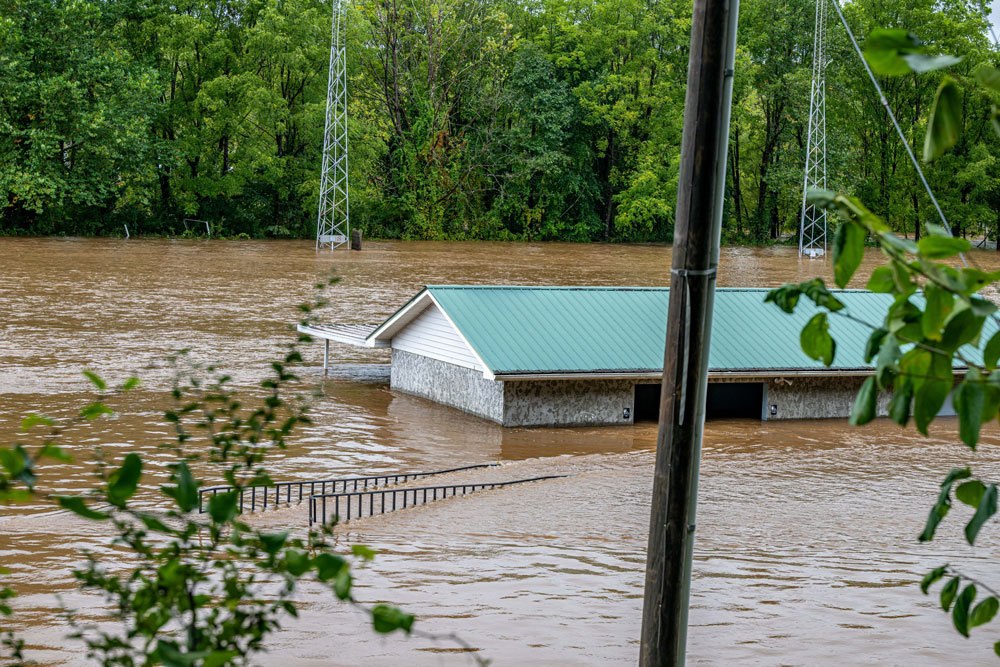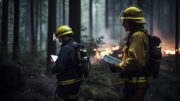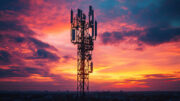
When disaster strikes, disaster communication systems need to work. Whether it is a citizen calling 911 for life-saving help or the first responders being sent to rescue them, everyone needs to be able to count on their emergency communication systems functioning.
Importance of Emergency Communications During Large-Scale Disasters
“The importance of emergency communications during disasters is paramount because that’s how the public reaches out for help,” said Stephanie Conner, Western Regional Coordinator with the North Carolina 911 Board. “Emergency communications, in a broader scope, is more than just 911 — it is the whole ecosystem of response,” added Pokey Harris, the North Carolina 911 Board’s Executive Director. “Whether it’s your statewide 911 network, the radio network for all of your first responders, or county-to-county/responder-to-responder networks, emergency communications are all encompassing.”
The Cost of Communication Failures
The cost of communication failures during large-scale disasters cannot be overstated. “People die,” Harris said. “I mean, I hate to be so candid, but that’s what happens. People die.”
History is full of tragic stories about what happens when emergency communications fail. “9/11 is probably the textbook example of the failure of communications,” said Harris. “So many people were in need of help, and could not get it.”
Part of the problem was the communications failures that occurred during 9/11. The police, fire and EMS agencies who attended the World Trade Center were using incompatible radio systems that couldn’t talk to each other. Add the overloading of the telephone and consumer cellular networks due to excessive traffic and physical damage, and hundreds of first responders and citizens died on 9/11 who might have been saved, had the emergency communications system worked.
Lessons from Past Disasters
The communications lessons learned from 9/11 motivated Congress to create the FirstNet Authority. Its goal was to establish a reliable nationwide network for first responders that all could use, thus resolving the kinds of communications failures that dogged the 9/11 response.
In turn, the FirstNet Authority built FirstNet. It is the nationwide U.S. wireless broadband network powered by AT&T with its own dedicated radio spectrum (Band 14), which is reserved for first responders.
Principles of Effective Emergency Communications
Effective emergency communications don’t just happen. They are the result of careful planning, the right equipment, and reliable transmission channels (like FirstNet) to carry emergency communications.
According to Pokey Harris, planning is the most important principle of emergency communications. “You have to have plans for selecting and buying the right equipment, for accessing networks to carry the traffic, personnel to run it, and backup plans, when things go wrong,” she said.
That said, there are other important principles associated with effective emergency communications. For instance, “you have to train your officers in procedures for such situations so they know what to do, and collaborate with all public safety agencies that are in or alongside your response area,” said Conner. “After all, if a disaster is large enough, it’s likely going to be affecting someone else besides yourself. And even if it’s only affecting one jurisdiction, the people there are likely to need help from someone else.”
Redundancy and Resiliency
As 9/11 proved, emergency communications systems can fail during large-scale disasters. This is why having communications systems that are redundant and resilient (have backups in case of main system breakdowns) is “paramount,” Harris said. “When an agency begins to build any type of emergency communication system or network, they have to include redundancy and resiliency as fundamental qualities of the system. If not, you are setting yourself up for failure. We all know that there are issues that can knock out a communications system — anything from a natural disaster or major cyber attack to Backhoe Bob severing a fiber optic cable by mistake. Whatever happens, your emergency communications system must be able to survive it.”
Interoperability Across Agencies
Another lesson from 9/11: Interoperability between first responder agencies is a must. This is something that the FirstNet network offers as a standard feature to all of its 7 million users. “In fact, this too is paramount,” said Conner. “We keep using that word, but it is so true. You have to be able to communicate with everybody around you, whether they are from your jurisdiction or from out-of-state.”
Real-Time Data and Intelligence Sharing
The days of public safety agencies only relying on shared voice communications are past. These days, they count on sharing real-time data and video as well over their smartphones, tablets, and laptop computers. With its ability to carry all of this content via 4G/LTE (and soon 5G) networks, FirstNet has this covered. It helps that FirstNet has the broadest coverage of any wireless network in the United States.
FirstNet in Disaster Response
Because it has been designed to serve first responders, FirstNet offers a range of services that no other carrier can provide. This makes FirstNet a profoundly useful communication platform during large-scale disasters
Priority and Preemption Capabilities
Alone among all U.S. wireless broadband networks, FirstNet provides first responders with priority access and preemption over all non-first responder traffic on its network. When network traffic ramps up during emergencies, first responders always come first on FirstNet. They don’t get blocked by non-first responders’ calls at any time.
“Priority and preemption means that your traffic will move first through the network. And when you’re thinking about an emergent situation, life or death situation, that’s very important
FirstNet in Action
The value of FirstNet was proven in North Carolina in 2024, during the hurricane-related disasters that beset the state.
A case in point: “We used FirstNet as our 911 wireless redundant solution when the infrastructure for the telecoms carriers in Western North Carolina was obliterated,” Harris said.
“Their fiber optic cables were mangled in rock and debris, wrapped around trees and homes. FirstNet helped us fill the gaps left by this damage.”
Technology and Tools Supporting Emergency Teams
Deployables and Coverage on Demand
FirstNet maintains a fleet of mobile communications assets that can be deployed to disaster areas, providing coverage on demand. These truck-and-trailer-mounted deployables allow wireless broadband service to be restored quickly for first responders, local governments, and the public.
Satellite Backup Systems
The deployables noted above also provide satellite access from disaster-affected areas. This means that wireless broadband can be restored to the affected areas, and connectivity restored to the entire world.
Future of Emergency Communications: AI, 5G, and Beyond
As advanced as emergency communications are today, the technology of tomorrow promises to make them even better. Artificial intelligence (AI) will help these systems process far more data in near real-time, providing first responders with richer and more actionable disaster intelligence. 5G wireless broadband networks will enable the carriage of more sophisticated and complex applications that can use the enhanced data provided by AI.
Why FirstNet Needs Reauthorization
The FirstNet Authority is investing $6.3 billion to add 5G to its existing 4G/LTE service. This fact, along with FirstNet being the only wireless broadband system dedicated to first responders, is why the FirstNet Authority is seeking reauthorization from Congress to extend its term.
“It is vital to reauthorize FirstNet, to ensure that it continues to provide us with the emergency communications services that we count on,” said Harris. “FirstNet has proven itself to be a critically-important partner to our state during large-scale natural disasters.”
FAQ
What are the best practices for emergency communications during a disaster?
Providing redundant, reliable, and interoperable communications to all first responders, at all times.
How does FirstNet support communication in large-scale emergencies?
FirstNet provides priority wireless service to first responders, plus deployables that can restore communications quickly after a disaster has damaged local telecommunications systems.
Why is interoperability important in disaster response?
Interoperability ensures that police, fire and EMS agencies can communicate with each other without problems, so that theft can rescue people.
What technologies improve communication for first responders?
Resilient, interoperable wireless broadband networks like FirstNet, plus ruggedized smartphones, tablets, and radios.
What are FirstNet deployables and how are they used?
They are truck-and-trailer-mounted cellular transmitters that can restore local telecom service, and connect to the outside world via satellite.
How can agencies train for better communication in disasters?
By planning for disasters in depth, using the equipment and resources they will need when disasters occur.
What’s the future of emergency communications technology?
AI and 5G, offering more sophisticated communications applications and the faster networks needed to carry them.
Why is reauthorizing FirstNet important for public safety?
FirstNet is the only wireless broadband network dedicated to first responders. All other options are profit-based, and do not provide first responders with priority access and preemption on their networks.




Be the first to comment on "Best Practices for Emergency Communications in Large-Scale Disaster Response"